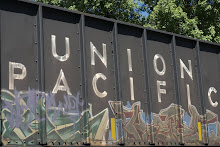

Medium: shaved ice
Artists: Zaha Hadid & Cai Guo-Qiang
Project: The Snow Show Project
About their process, Guo-Qiang writes "I poured vodka over Zaha Hadid's fluid ice and snow structure and set alight the liquid to produce a cool, blue flame that wrapped the installation in warmth." Hadid shares, "Ice was treated as a medium to be sculpted and carved. Vaulting, floating spaces and canyons formed an area that enveloped visitors in a glowing ever-changing glacier."
Elaine showed us The Snow Show project earlier this term. I revisited the site today; it catalogues work through March 2006, whereas the hard copy book focuses on the massive exhibit held in Finnish Lapland in early 2004 edited by Lance Fung.
The book in my opinion offers better documentation than the website. The site is great because it is free and is available everywhere, but the book has extraordinary photos and documents results of collaborations between architects and visual artists. I should note that I personally feel architects are artists. Architects, in the course of their study, learn engineering and structure more often than "artists" but in the end, it's all part of a continuum of experiences and learning. Guo-Qiang was born in 1957 in Quanzhou City, Fujian Province, China. He trained in stage design in Shanghai. Zaha Hadid was born in Baghdad, Iraq in 1950. She studied mathematics in Beirut and architecture in London.
In the Fung book, I was struck by a collaboration between two artists I admire, both of whom have been discussed in prior sessions in Elaine's class. One collaborator is the pyrotechnically imaginative Cai Guo-Qiang and the other is the architecturally spellbinding creative force behind structures which seem to defy gravity, Zaha Hadid
The play of luminosity and shadow with fire and ice is an amazing shaping of the elements that is simultaneously loose and controlled. It was at once fixed and in a state of constant change.
I love this work because it is about great collaboration, about playfulness, about setting up a controlled environment and then relinquishing control, and ultimately, about wonderful light.








